Consulting
Client Info Our client is one of Canada’s largest construction vehicle suppliers. They employ thousands of skilled technicians across…
by Beam Data
October 19, 2021
Blog
Businesses are always looking for more intelligent ways to predict customer needs, streamline processes, and obtain a competitive edge in today’s data-driven environment. Predictive analytics is one of the most effective technologies that can help achieve these goals. But what is predictive analytics, and how are businesses utilizing it to stay ahead?
In this blog post, we’ll learn about the predictive analytics definition, explore how industries like healthcare and supply chain management are using it, and examine the best predictive analytics tools that are reshaping modern business strategies.
Predictive analytics is the branch of advanced analytics that uses current and historical data along with statistical modeling, data mining techniques, and machine learning to predict future trends and events.
Businesses use predictive analytics to estimate revenues, lower risks, improve customer experiences, and optimize operations in almost any industry.
In simpler terms, predictive data analytics transforms raw data into actionable insights, helping businesses answer questions like:
By identifying patterns and probabilities, predictive analytics tools allow organizations to make data-backed decisions and reduce reliance on gut instinct.
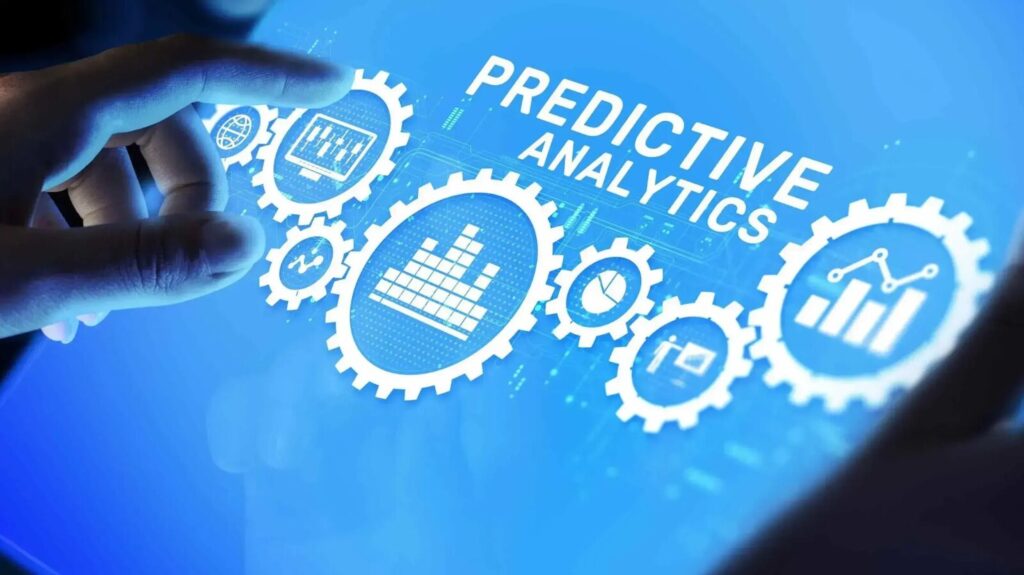
To forecast future events, predictive analytics uses statistical models and machine learning techniques on both historical and current data. Creating models that can produce precise predictions requires data scientists to examine trends, correlations, and patterns in databases.
Five essential steps are often involved in the workflow for developing a predictive analytics solution for business:
This end-to-end process enables businesses to turn raw data into reliable forecasts that support smarter decision-making.
With a strong foundation in this process, supported by WeCloudData’s expert-led courses and hands-on labs, professionals and teams can confidently build and deploy scalable predictive analytics solutions that drive value.
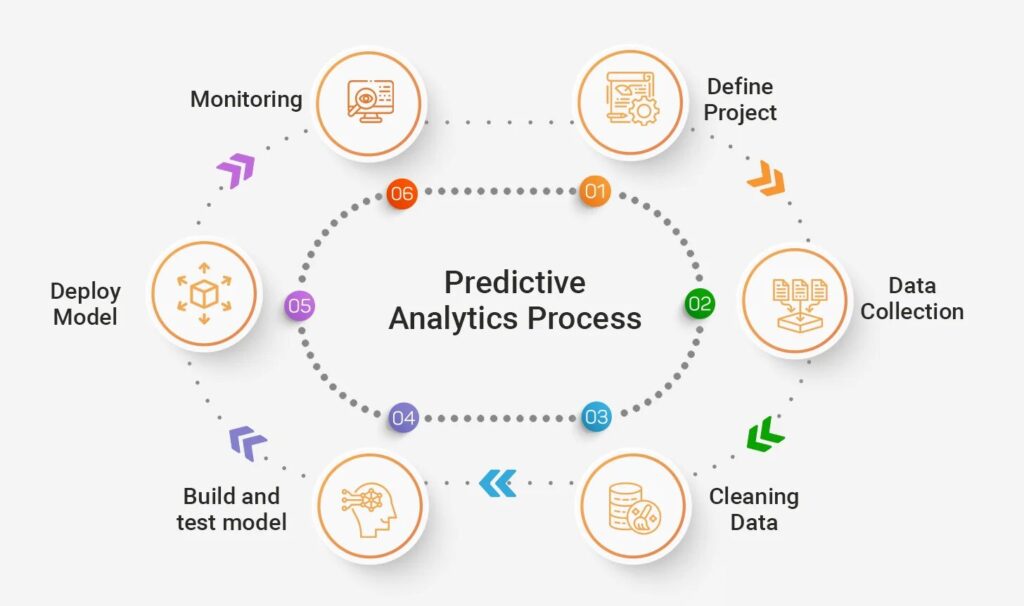
Businesses across all sectors are embracing predictive analytics strategies to gain a competitive edge. Let’s explore some key industries leading the way.
Predictive analytics in healthcare is considered one of the most significant uses of data science in recent years. The predictive models are utilized in clinics and hospitals to:
For example, predictive analytics in healthcare can identify individuals at risk of developing diabetes by using data from electronic health records (EHRs), enabling early intervention.
Beyond providing individualized care, public health organizations can effectively organize vaccination campaigns, simulate the spread of disease, and distribute medical resources with the help of predictive analytics tools.
Real-time patient data combined with machine learning algorithms has enormous potential to enhance medical delivery, save lives, and lower medical costs.
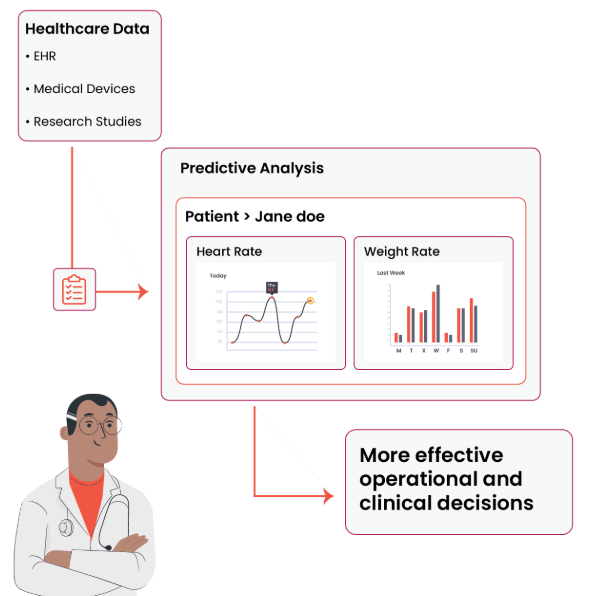
Modern data-driven marketing thrives on personalization and timing, two areas where predictive analytics shines.
By analyzing customer behavior, social media activity, and past purchase history, marketers can predict:
This helps companies to retain key clients, increase conversions, and develop highly focused marketing. Companies like Netflix, Amazon, and Spotify are excellent examples of how predictive analytics can be used to customize recommendations and maintain customer engagement.
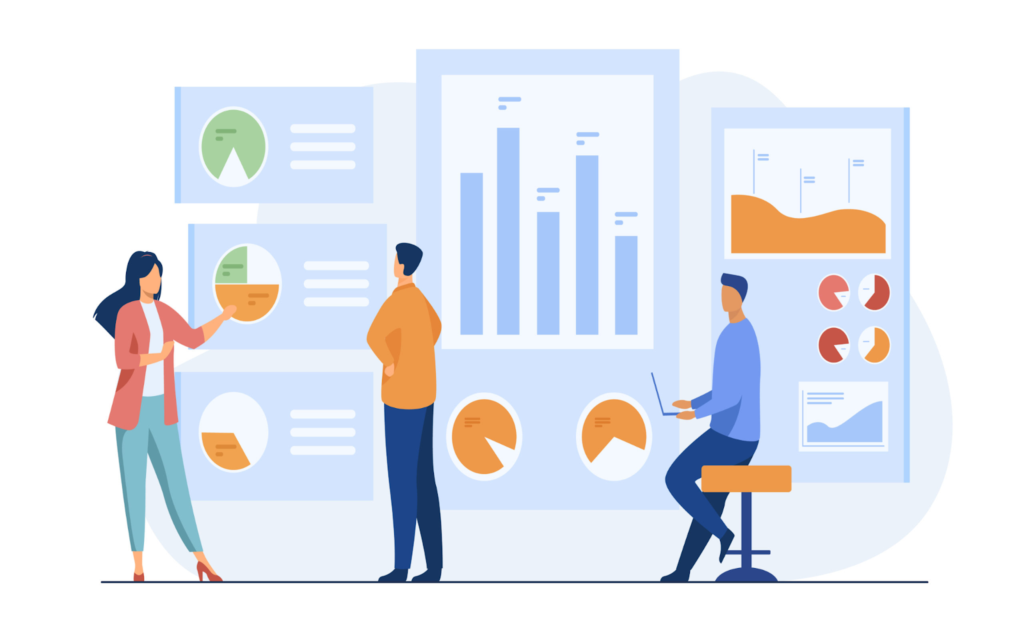
The use of predictive analytics in supply chain management is transforming how businesses handle production scheduling, logistics, and inventory. Businesses can now:
An international retail chain, for example, can utilize predictive analytics techniques to forecast product demand based on holidays, weather trends, and past consumer purchases, assisting them in keeping shelves supplied with what customers truly desire.
Through the analysis of machine sensor data, predictive data analytics in manufacturing makes predictive maintenance possible, preventing expensive repairs and downtime by anticipating equipment faults before they occur.
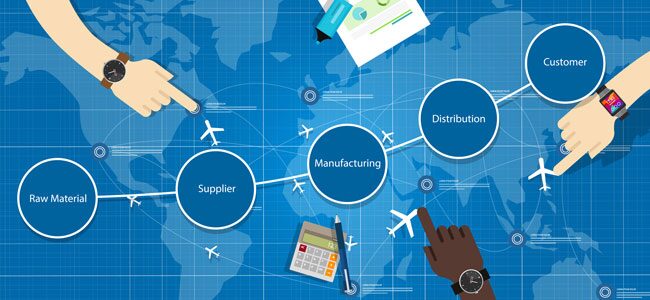
The financial sector is an early adopter of predictive data analytics, particularly for:
Predictive analytics solutions are used by banks and fintech businesses to identify anomalous transaction patterns, flag fraudulent conduct instantly, and provide clients with individualized financial advice.
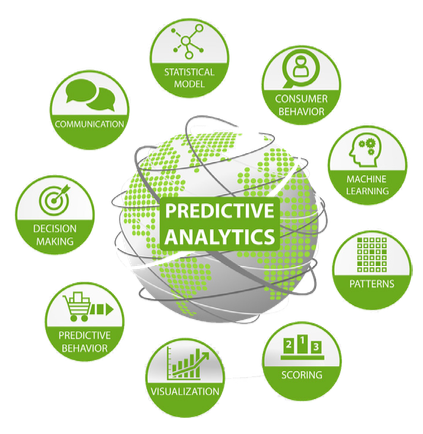
A wide range of predictive analytics tools are available today, catering to different business sizes and needs. Here are some of the top platforms:
A pioneer in the field, SAS offers comprehensive capabilities for data mining, forecasting, and machine learning.
Widely used in academia and business, SPSS provides easy-to-use statistical tools for building predictive models.
Azure ML is a cloud-based tool that allows teams to build, deploy, and manage predictive models at scale.
Although Tableau is primarily a visualization tool, its integration with R and Python makes it powerful for predictive data analytics when used with custom scripts.
Great for developers and data scientists building machine learning models using Google’s infrastructure.
As predictive analytics becomes a cornerstone of modern business strategy, having the right skills, tools, and support is essential. That’s where WeCloudData comes in.
WeCloudData empowers future data professionals and organizations by offering:
Whether you’re an individual seeking to upskill with predictive analytics training in Toronto or a business looking to integrate predictive data analytics into your operations, WeCloudData is your trusted partner.
👉 Ready to future-proof your career or organization with predictive analytics?
Visit weclouddata.com to explore our programs, workshops, and enterprise soluti
"*" indicates required fields

WeCloudData is the leading data science and AI academy. Our blended learning courses have helped thousands of learners and many enterprises make successful leaps in their data journeys.
"*" indicates required fields
Canada:
180 Bloor St W #1003
Toronto, ON, Canada M5S 2V6
US:
16192 Coastal Hwy
Lewes, DE 19958, USA